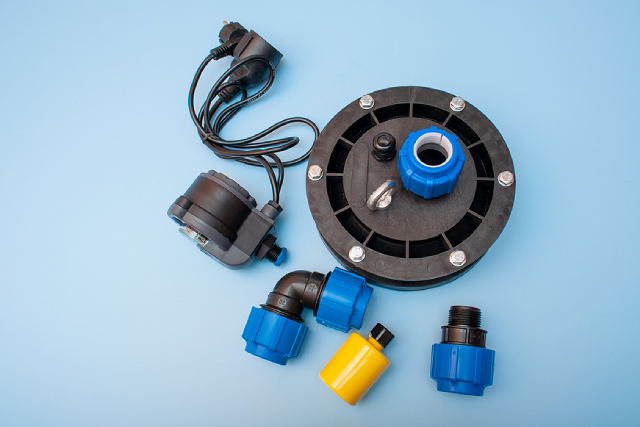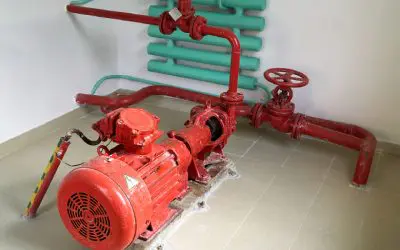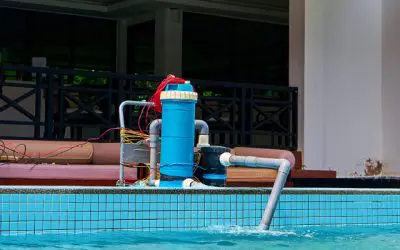
Across industrial systems, accuracy in liquid level monitoring is vital for safety, performance, and cost efficiency. Whether in chemical storage tanks, cooling systems, or screw compressor condensate drains, maintaining the correct fluid levels prevents system failures and ensures reliable operation. One of the most dependable devices for this task is the float switch, a simple yet highly effective tool for detecting liquid presence and triggering control actions.
What Is A Float Switch?
A float switch is a mechanical or electromechanical device designed to sense liquid levels and activate an electrical circuit when a specific height is reached. It operates using buoyancy – the ability of the float to rise or fall with the liquid surface. When the float moves, it actuates a switch that can turn on a pump, close a valve, or send a signal to a controller.
This mechanism has been used for decades because of its simplicity and reliability. Whether in a wastewater tank, an oil separator, or a compressed air system, float switches are a practical solution for level control without the complexity or cost of electronic sensors.
How Float Switches Work
The working principle of a float switch is straightforward. A buoyant float moves in response to the liquid level. When the liquid reaches a certain height, the float’s position changes, causing the internal switch mechanism to open or close a circuit. This movement can control devices such as pumps, alarms, or solenoid valves, making float switches one of the essential pump accessories for maintaining efficient and automated fluid level management.
There are two main types of operation:
- Direct mechanical action, where the float physically moves a lever or rod that triggers a micro-switch.
- Magnetic coupling, where a magnet inside the float activates a sealed reed switch as it passes by.
Both designs are highly reliable, though magnetic float switches are preferred in sealed environments where contamination or corrosion must be avoided.
Key Components Of A Float Switch
Float Element
The float is the most critical component. It can be made from stainless steel, plastic, or other buoyant materials, depending on the fluid type. The float’s size and density determine how easily it reacts to changes in level.
Stem Or Guide Tube
Many float switches feature a stem that guides the float’s vertical movement. The guide ensures stability, particularly in turbulent or foamy liquids, and prevents the float from drifting sideways.
Switch Mechanism
The internal switch may be magnetic, mechanical, or electronic. Magnetic reed switches are popular because they are durable and sealed from the liquid, ensuring long life even in harsh conditions.
Enclosure And Seal
Proper sealing prevents fluid ingress, corrosion, and short circuits. For corrosive or high-pressure applications, housings are made of materials like stainless steel or reinforced plastic.
Factors Affecting Detection Accuracy
Buoyancy And Liquid Density
A float must be carefully chosen for the liquid’s density. For example, a float designed for water might not work properly in a heavy oil or viscous fluid.
Hysteresis
This refers to the difference between the point where the float switch activates and where it deactivates. A small amount of hysteresis prevents rapid on/off cycling (known as chatter) when the liquid hovers near the set level.
Mounting Orientation
Float switches can be mounted vertically or horizontally, depending on space and design requirements. Correct mounting ensures smooth movement and consistent readings.
Environmental Factors
Temperature, pressure, and chemical composition can affect the float’s performance. Materials must be compatible with the fluid to prevent swelling or corrosion.
Advantages Of Using Float Switches
- Simple and reliable: With no complex electronics, float switches offer dependable operation with minimal maintenance.
- Cost-effective: They are generally less expensive than radar or ultrasonic level sensors.
- Low power consumption: Ideal for systems where energy efficiency is important.
- Clear switching points: Perfect for high- and low-level alarms, pump control, and automatic filling or draining.
Limitations To Consider
While float switches are durable, they are not suitable for every application. In fluids with heavy contamination or sludge, the float may stick or become fouled. They also provide discrete level detection rather than continuous measurement, making them less ideal for processes that need precise, real-time monitoring.
Regular maintenance, including cleaning and inspection, helps extend the life of the switch and maintain accuracy.
Applications In Industrial Systems
One of the most common industrial uses for float switch technology is in screw compressor condensate management. Compressed air systems naturally generate moisture, which collects in tanks and drains. A float switch can automatically trigger drainage when condensate reaches a set level, preventing overflow and protecting the compressor system from water damage.
Other applications include:
- Water treatment plants for tank level control
- Marine vessels for bilge water monitoring
- Chemical and pharmaceutical tanks requiring non-contact level sensing
- Cooling towers and HVAC systems for overflow prevention
Installation And Maintenance Guidelines
Choose The Right Materials
Match the float and housing materials to the fluid type. For example, stainless steel is suitable for oil or fuel, while polypropylene suits water or mild chemicals.
Ensure Free Movement
Check that the float moves freely without obstruction. Misalignment or debris can cause inaccurate readings.
Protect The Switch Mechanism
Use protective cages or shields to prevent turbulence or foam from affecting the float’s motion.
Inspect Periodically
Over time, deposits or corrosion may reduce responsiveness. Periodic manual testing confirms that the switch activates correctly.
Follow Electrical Safety Standards
Ensure the wiring and switch contacts meet voltage and current ratings. In hazardous areas, use explosion-proof or intrinsically safe models.
Float Switches Vs. Other Level Sensors
While advanced technologies such as ultrasonic, radar, or capacitive sensors provide continuous measurement, they often come at a higher cost and require calibration. Float switches remain a preferred option where reliability, simplicity, and cost-effectiveness are key priorities.
Conclusion
A float switch offers one of the most practical and proven methods for detecting liquid levels across a range of industrial and commercial systems.
By understanding its design, materials, and operating principles, users can ensure long-term performance and avoid costly downtime.
For dependable level sensing solutions and expert engineering support, visit Winston Engineering. Our team provides a wide range of fluid handling and instrumentation products tailored to your specific industrial needs.



